A good knife is probably the most important bit of kit you’ll buy for your kitchen. But if you don’t look after it, it will end up being replaced when it doesn’t need to be. As James Ross-Harris of knife makers Blenheim Forge says, too often kitchen knives are “treated as almost disposable objects, used until they are blunt and then rejected. It’s sad to see.”
A knife is, after all, a tool that needs to be maintained. “There’s a huge amount of satisfaction to be gained from taking something that doesn’t work as effectively and bringing it back to top condition,” says Helen Symonds, co-founder of knife emporium Kitchen Provisions. Not to mention being cheaper in the long run. So from sharpening to cleaning, here’s how to keep your kitchen knives on pointe.
How to take care of your kitchen knives
Surface matters
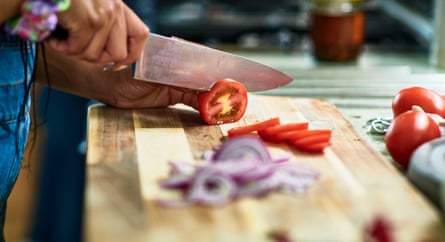
“Glass and stone chopping boards should be illegal,” says Ross-Harris, who believes few sounds are worse than “a razor edge being sliced into a slate chopping board – it will blunt any knife almost immediately”. Avoid using a knife on any surfaces that are too hard – this includes metal and even bamboo chopping boards. Symonds recommends investing in an end-grain chopping board (where the fibres are perpendicular to the surface, providing less resistance to the knife blade) or a surface specifically engineered for knives. “The absolute premium one is made by Asahi,” she says. “They use a compressed rubber, which is really gentle on the edges of knives.”
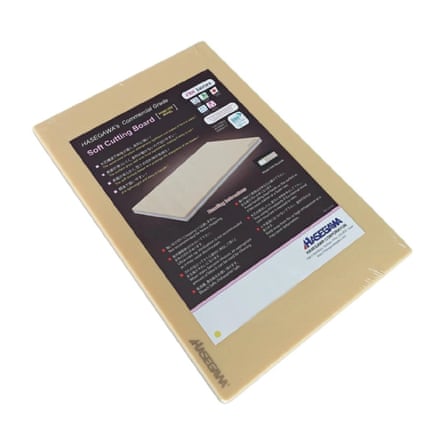
Hasegawa Pro-soft chopping board

Franke Mythos silicone chopping pad
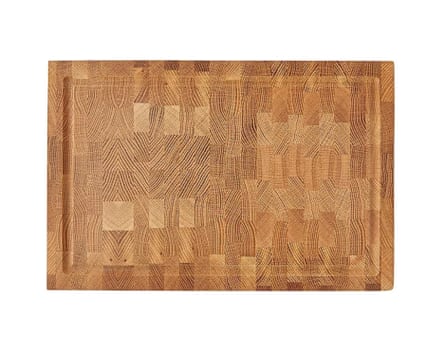
End-grain oak chopping board
No stones, bones or frozen food
“You often see people whacking their blade into a chicken carcass or an avocado stone or using it to pry apart something from the freezer,” says Symonds. You really don’t want to be doing that. “Your knife will chip, and if it doesn’t chip, then it will blunt,” she says.
Remember, it’s not a sign of a good knife if it can get through anything. “That normally means the knife isn’t refined enough,” says Symonds, and is prone to dulling. So get a good-quality blade in the first instance. Having the right size and style of knife also means you’re more likely to use it correctly. “If the knife is too long, for example, you might be tempted to twist or drag it across the board,” adds Symonds, which can also cause damage.
Keep it clean – and never use the dishwasher
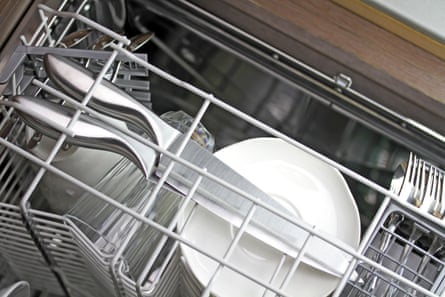
A lot of handmade knives are made from carbon steel, which cuts well, but will rust if left wet, says Ross-Harris. For this reason, never, ever put them in the dishwasher: “Even stainless-steel knives with plastic handles, which may not visibly seem affected by a round in the dishwasher, will dull faster due to the caustic environment.” Handle aside, the vibration of a dishwasher can be problematic for the blade itself. “It will find itself next to something like the stem of a glass or another bit of metal, and the knife won’t like that,” says Laurie Timpson of Savernake Knives in Wiltshire. Plus, your knife shouldn’t get that dirty, even if you’re tackling something quite gnarly. “Put it tip-down under a running tap, give it a bit of a scrub, wipe it off, dry it, and put it away,” advises Symonds – and “don’t leave any knives hanging out under the dish rack.”
Ditch the knife block
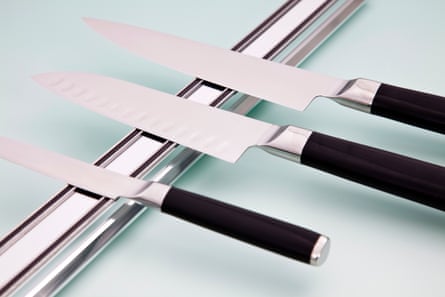
Symonds isn’t a fan of a knife block: “It runs the risk of the knife resting on the blade edge, which can blunt it. You can also blunt it by pulling the knife in and out.” Much better to get a magnetic knife rack to attach to the wall. Otherwise, if it’s a knife you use regularly, Symonds suggests simply sitting it on the chopping board (as long as there are no children or animals around, of course). Or, if it came in a box, hang on to it and house the knife in there. “You don’t want it to be rattling around in the drawer with all your other cutlery,” adds Symonds.

Messermeister acacia wood magnetic knife rail
after newsletter promotion

Stainless steel magnetic knife rack
Look sharp
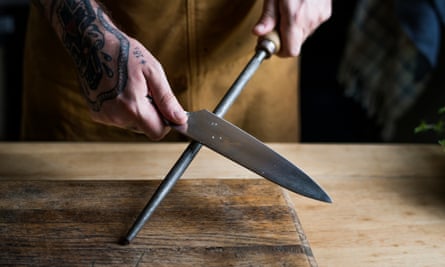
“I cry when people buy one of our knives and say they don’t need a honing steel,” says Timpson. “Most people don’t chop carefully on a perfect even surface, so knives go through a lot. Over time, therefore, the blade will start to bend one way or the other and compress, and you will have to start pressing harder before it cuts, say, a tomato.” This doesn’t mean the blade is blunt, just simply that the sharp part of the blade isn’t straight. “If you don’t do anything, it will need sharpening, or it might chip and then you’re stuffed,” says Timpson. As soon as you notice any degradation in cutting quality, give the knife gentle licks up and down on a honing steel – “you’ll sort it for probably a year”.
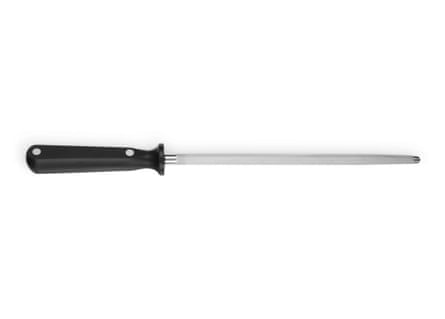
Classic sharpening steel

Professional X50 Chef diamond sharpening steel
Use a whetstone
Maintaining knives is part of ownership, agrees Ross-Harris, who believes that little and often is the best approach. “We recommend using a whetstone or a fine sharpening rod; a knife made from good-quality steel shouldn’t require much more than a few minutes on a stone every couple of months.”
A whetstone also ensures even sharpening. “If you use a pull-through sharpener, for example, at best they won’t work, and at worst they won’t sharpen the entire length of the blade,” says Symonds, potentially leaving the middle of the blade sharper than the heel and tip.
Happily, a whetstone is easier to use than you might think. “Anyone can master it with a little practice,” says Ross-Harris. “The key thing with maintaining a knife is to not be afraid to give sharpening a go; it’s hard to do any real damage through bad technique.” And once you’ve cracked it, that’s a skill for life.

ProCook combination whetstone
Anna Berrill is joint deputy editor of Feast and author of two cookbooks, Vegetable Genius and Store Cupboard Genius. She can often be found cooking with ferments or in a bakery – walking there with the dog, for balance

 2 months ago
34
2 months ago
34

















































